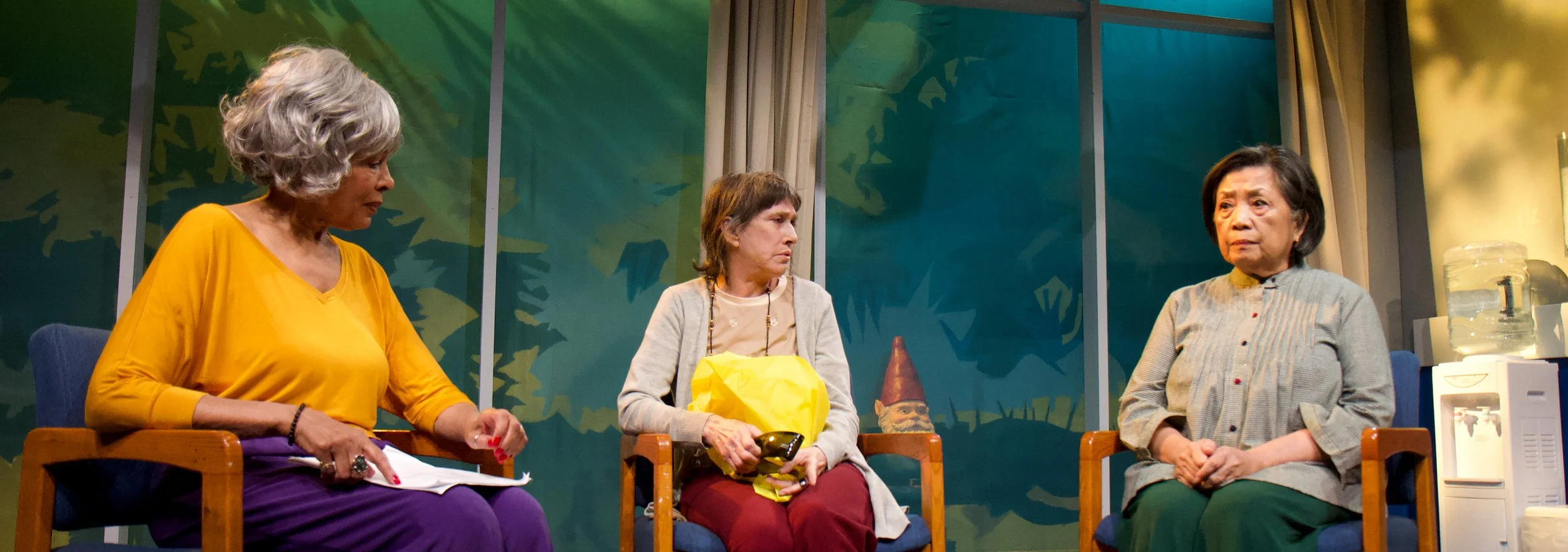The young grad students who populate Dan Rosen’s delightfully absurd The Last Supper are left leaning, sometimes shallowly, and often overbearingly sanctimonious. For entertainment, they tune in to an extremist conservative commentator who makes Bill O’Reilly look like a bleeding heart. Mr. Rosen, who wrote the screenplay for the 1995 film of the same title (Ron Perlman and a young, painfully unskilled Cameron Diaz were notable cast members), now brings his tale to off-off Broadway. Whereas the film is filled with dark psychopathic tension, the stage play is wackier and more balanced, and the actors reveal depth that is notably absent in the movie version. An Arsenic and Old Lace for a new generation, The Last Supper first pits the grad students against Zach (played by a convincing Joe Beaudin) who assists one of them when his car fails during a storm. The grateful students invite Zach to dinner and, fatefully, Zach accepts. The menacing and racist Zach, a gung ho Iraq War veteran, promptly insists on saying grace, pays homage to George W. Bush and spits out the tofu turkey in disgust.
Worse, Zach is a rabid history denier who scoffs at the Holocaust. He mimics Jews in a clueless voice that resembles that of Roseanne Roseannadanna. Insults fly around the table and Zach, illustrating his point that these entitled brats couldn’t fight their way out of a paper bag, suddenly pulls a knife on Mark (Michael Bernardi) who, when Zach attacks another student, grabs the knife and plunges it into Zach’s back. This invites recriminations, and some fairly funny dead guy jokes. The students even fret about how a murder conviction will look on their resumes. Guilt soon morphs into rationalization and self-satisfied zeal; soon, these nascent killers are off to the races, welcoming new Sunday dinner guests—an otherwise endearing minister (played perfectly by Larry Gutman) who happens to be a vicious homophobe, a misogynistic author, and a woman who believes J.K. Rowling is satanic.
Mr. Rosen, for the most part, tracks his screenplay, updating it to the time of the Bush II administration. The material is still fresh because little has changed in the decade or so between the film and the time of the play: rabid pundits rule the airwaves, the Hillsboro Baptist Church rails hatefully against homosexuals, and in many communities the term “family values” remains code for odious intolerance.
Set designer Jak Prince does a great job of replicating a grad house dining room, and lighting designer Dan Jobbins expands the set parameters considerably with his clever work. Cast standouts are J.L. Reed as Luke, a roommate with ice water in his veins, who steers the others down the path of murder, and Mr. Bernardi, who commands the set as the group’s liberal thought leader. Fight Director Turner Smith has trained the actors well; the several physical scenes are realistic and even chilling.
Because the talented cast rotates (I saw Cast # 1), you may catch another capable troupe, but I certainly recommend The Last Supper. It’s funny, lighthearted, absurd and perfect for a summer evening in the city.






